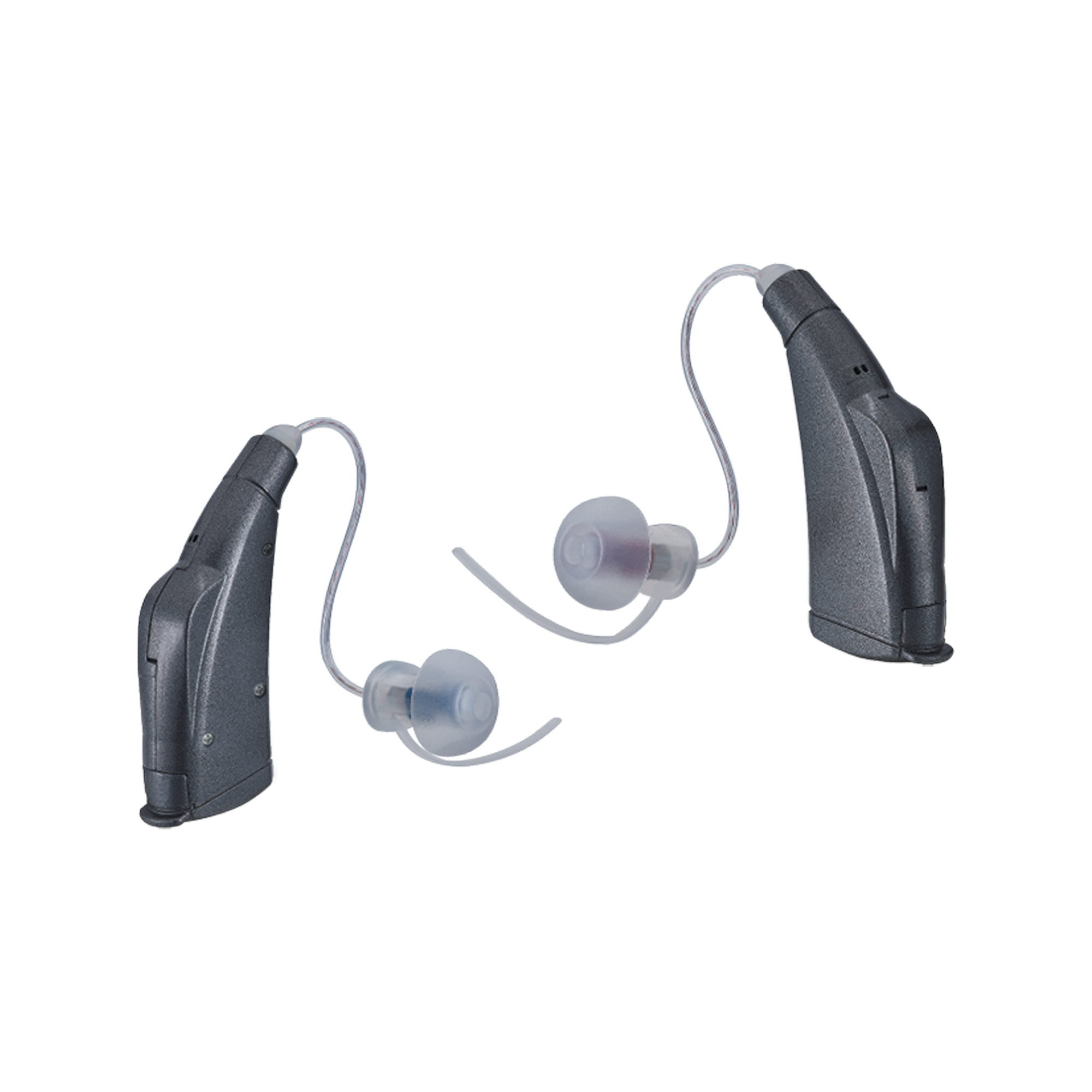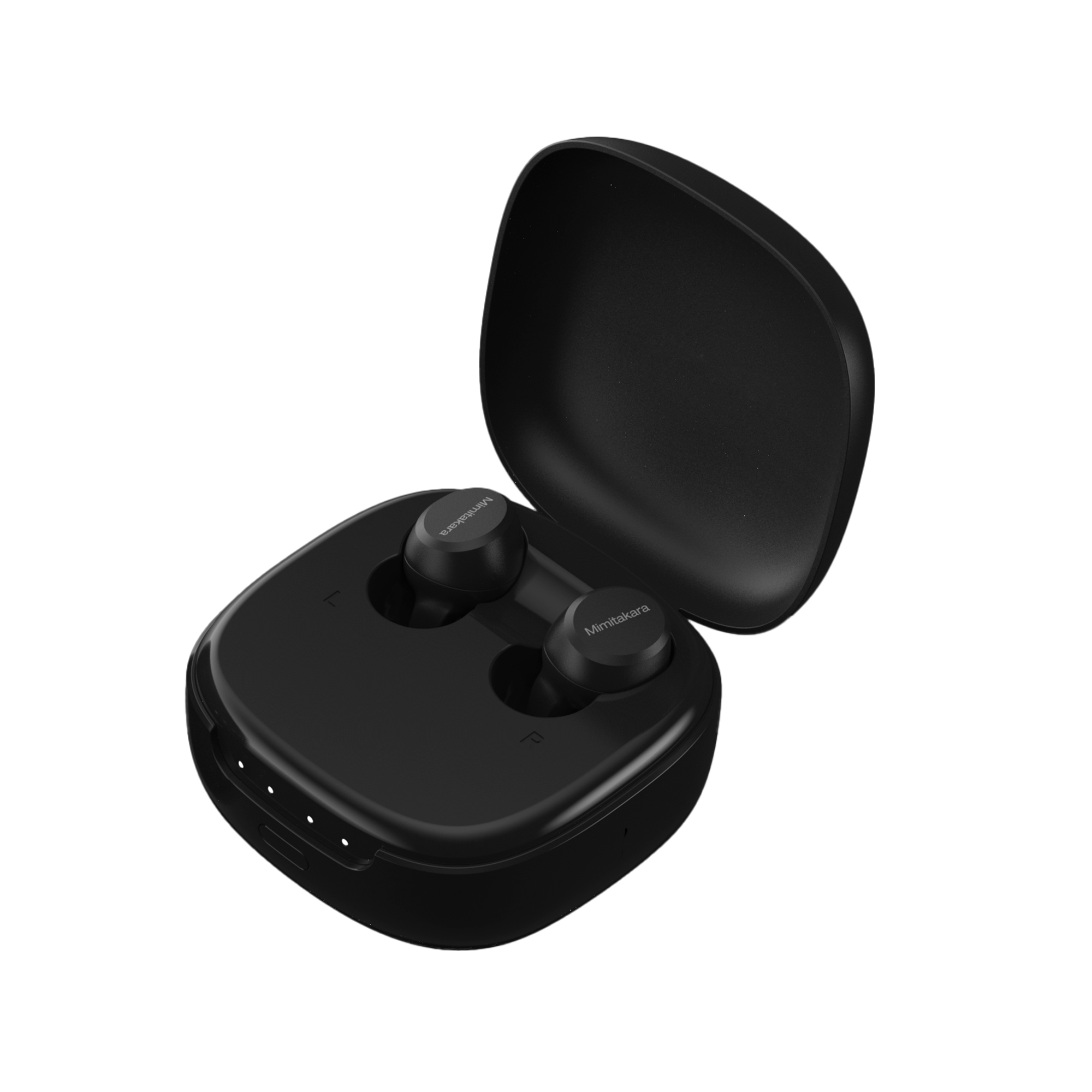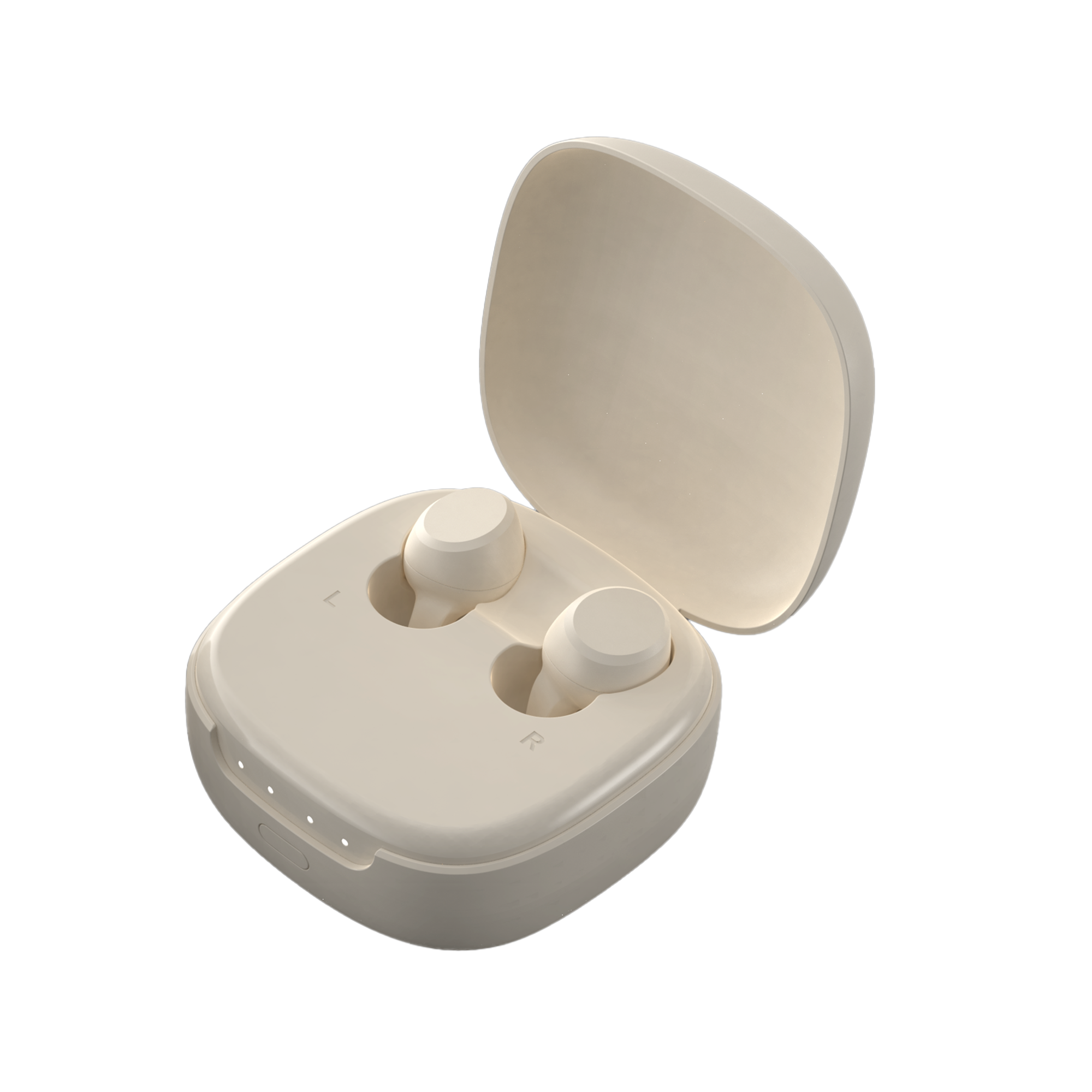In an era where connectivity and ease of access have become cornerstones of technology, Bluetooth hearing aids emerge as a beacon of innovation for those facing hearing challenges. As essential tools in 2024, these devices not only enhance the quality of life for users but also embody the seamless integration of technology with personal healthcare. By leveraging Bluetooth technology, hearing aids have transcended their traditional role, evolving into multifunctional devices that offer users an unparalleled audio experience. This advance addresses not just the need for clearer sound and volume control but also the desire for a more connected and immersive listening experience, catering to individuals with various degrees of hearing loss, including those experiencing tinnitus.
This article further discusses practical applications, showcasing how these devices improve daily interactions and overall quality of life. From facilitating clearer phone calls and music enjoyment to enabling personalized volume and sound settings that address the unique needs of each user, Bluetooth hearing aids stand out as pivotal in the audiological landscape. As we explore these aspects, readers will gain insight into why Bluetooth hearing aids are not just a matter of convenience but a necessity in enhancing auditory connection and embracing the sounds of life.
How Bluetooth Hearing Aids Work
Bluetooth hearing aids utilize advanced technology to enhance the auditory experience for individuals with hearing impairments by connecting wirelessly to various Bluetooth-enabled devices. This seamless connectivity is achieved through the exchange of radio frequencies between the hearing aid and devices such as smartphones, laptops, televisions, or intermediary devices. These intermediary devices are optional accessories that can facilitate the connection and allow for audio streaming, often available through prescription or over-the-counter hearing aid retailers.
Connectivity and Integration
Bluetooth hearing aids are equipped with specialized hardware that transmits signals. This hardware, however, occupies space within the hearing aid, which can make it challenging to incorporate Bluetooth technology into smaller, more discreet styles. For example, the Starkey Evolv AI completely-in-canal (CIC) hearing aid includes an antenna on the outside, allowing for the necessary internal space for this technology. Despite these advancements, finding a Bluetooth solution for invisible-in-the-canal (IIC) hearing aids remains a challenge.
User Control and Streaming
Bluetooth connectivity in hearing aids means they can connect to other devices emitting Bluetooth signals. This feature allows the hearing aid to function almost as a remote control for connected devices. Users can manage audio settings directly from their devices, adjusting volume, programs, and even making fine-tuning adjustments as needed. Additionally, when paired with a smartphone or similar device, users can enjoy direct audio streaming. This capability transforms the hearing aids into built-in headphones, providing a personalized audio experience directly into the user's ears. This is particularly beneficial for phone calls, as it offers a hands-free experience by streaming voices directly to the hearing aids, thereby enhancing clarity and ease of communication.
Compatibility and Requirements
To ensure optimal functionality, Bluetooth hearing aids require compatible smartphones with up-to-date software and hardware. General requirements typically include an iPhone 5 or newer with at least iOS 7, or Android devices running OS version 8 or newer. However, compatibility can vary based on the specific hearing aid model's software. Users are advised to verify these requirements to ensure seamless integration and avoid connectivity issues.
By integrating Bluetooth technology, hearing aids not only improve sound quality and user experience but also enhance overall accessibility and independence, making them a crucial tool for individuals with hearing challenges.
Benefits of Bluetooth Hearing Aids
Personalized Listening Experience
Bluetooth hearing aids significantly enhance the auditory experience by allowing users to tailor sound settings to their specific hearing needs. With advanced features such as the ability to adjust frequencies, customize sound profiles, and optimize settings through smartphone apps or other control methods, individuals can enjoy a highly personalized listening environment. This customization not only improves communication but also ensures comfort and enjoyment, making it easier to engage with various media like music and podcasts with clarity.
Hands-free Listening
One of the standout benefits of Bluetooth hearing aids is the convenience of hands-free listening. Whether it's taking phone calls, listening to music, or engaging with video content, these devices enable audio streaming directly to the user's ears without the need to handle or hold a phone up to the ear. This feature is especially beneficial in maintaining clear conversations without the interference of background noise or the hassle of wires. For instance, during phone calls, the sound is directly streamed to the hearing aids, enhancing clarity and making it easier to understand the conversation.
Bluetooth hearing aids offer exceptional control and reliability to users. They can be connected to a smartphone or smartwatch app, allowing for remote adjustments of volume and program settings. This capability is particularly useful for those who find it challenging to manipulate small buttons on the aids themselves. Moreover, Bluetooth technology, being a standard protocol in the electronics industry, ensures uniformity and reliability across devices. Users can expect a stable connection up to 30 feet away from their devices, providing freedom and flexibility in various settings, from home to workplace.
Remote Control and Reliability
Types of Bluetooth Hearing Aids
Bluetooth hearing aids have evolved significantly, offering various types that cater to different user needs and preferences. These devices leverage Bluetooth technology to enhance user experience, providing seamless connectivity with a range of electronic devices. Here, we explore the primary types of Bluetooth hearing aids: Made for iPhone, Android-Compatible, and Universal Streaming.
Made for iPhone
Made for iPhone (MFi) hearing aids represent a significant advancement in hearing technology. Introduced initially by ReSound in 2013, these devices utilize Bluetooth Low Energy (LE) connectivity to stream audio directly from compatible Apple devices without draining the battery significantly. Users can enjoy hands-free calling and audio streaming from their iPhones, iPads, and even Macs, as long as they meet system requirements like iOS 7 or later and specific hardware models. MFi hearing aids are designed to work seamlessly with Apple's ecosystem, providing excellent sound quality and user convenience without the need for additional streaming devices. Most major hearing aid brands now offer MFi-compatible models, which can last between 40–50 hours on a single charge, depending on usage.
Android-Compatible
Following Apple's lead, Google introduced the Audio Streaming for Hearing Aids (ASHA) protocol in 2019, enabling direct Bluetooth LE audio streaming capabilities in Android devices. This protocol allows compatible hearing aids to connect with Android phones, offering similar benefits as the MFi hearing aids, including hands-free calls and direct audio streaming. The ASHA protocol supports a range of Android devices, provided they run on Android OS version 8 or newer. This development marked a significant step towards inclusivity, allowing users who prefer Android devices to access advanced hearing aid technology.
Universal Streaming
Sonova, a leading hearing aid manufacturer, introduced the Sonova Wireless One Radio Digital (SWORD) technology in 2017, which was a breakthrough in Bluetooth hearing aid connectivity. This technology enables hearing aids to connect with any Bluetooth-enabled device, including older mobile phones and tablets, regardless of the operating system. The latest innovation from Sonova includes the PRISM chip, featured in the Phonak Paradise model, which offers enhanced sound processing capabilities and universal connectivity with reduced power consumption. This allows users to stream audio from a wide range of devices while ensuring the battery lasts longer.
Bluetooth hearing aids not only amplify sound but also bring a level of convenience and flexibility that transforms how users interact with their environment. Whether it's through specific compatibility with iOS or Android devices or through universal streaming options, these hearing aids push the boundaries of what can be expected from personal audio devices.
Practical Applications
Connecting to Smartphones
Bluetooth hearing aids offer transformative connectivity with smartphones, allowing users to manage their auditory experience seamlessly. Once paired, individuals can access various controls directly from their smartphone settings. This integration provides a dashboard where users can adjust volume, select audio presets, and manage streaming preferences, enhancing the user experience significantly. For iPhone users, pairing is accomplished via the Accessibility settings, where hearing devices are easily managed. Android users benefit from similar functionalities, ensuring that regardless of the device, users can enjoy optimized audio settings tailored to their needs.
Streaming Music and TV Shows
The ability to stream audio directly from devices like smartphones and televisions to Bluetooth hearing aids significantly enhances the entertainment experience. Users can enjoy their favorite music and shows with clear, personalized audio streamed right into their hearing aids, which act as personal headphones. This feature is particularly beneficial in environments where ambient noise can interfere with sound quality. For television enthusiasts, certain hearing aid brands offer specialized streamers that connect to TVs, directing sound straight to the user's hearing aids, thus maintaining audio clarity without increasing the volume excessively.
These practical applications of Bluetooth hearing aids not only improve the quality of life for individuals with hearing impairments but also bring a level of convenience and integration with modern technology that was previously unattainable.
Conclusion
Through this exploration of Bluetooth hearing aids, we've uncovered the significant strides in technology that have made these devices invaluable to individuals with hearing loss in 2024. By delving into the mechanics, benefits, types, and practical applications, it becomes evident that Bluetooth hearing aids are not just a luxury but a necessity for integrating seamlessly into a digital world. Their ability to enhance auditory experiences, ensure personalized comfort, and provide unparalleled connectivity underscores the importance of these innovations in the realm of personal healthcare and technology.
As we look toward the future, the implications of Bluetooth technology within hearing aids are profound, not only advancing the quality of life for users but also pushing the boundaries of what is possible in hearing aid technology. The call to action is clear: embracing these advancements is essential for anyone looking to overcome hearing challenges with sophistication and ease. With continuous improvements and integrations on the horizon, Bluetooth hearing aids represent a bridge between the worlds of audiology and personal technology, promising an even more connected and empowering future for users worldwide.
FAQ
Why are Bluetooth hearing aids beneficial?
Bluetooth hearing aids offer enhanced audio clarity, making it easier for individuals with hearing loss to discern different instruments in music. Most models also feature customizable settings via an app, allowing users to adjust the equalizer to their preferences.
What advancements are expected in hearing aid technology by 2024?
In 2024, hearing aid technology will continue to evolve, incorporating advanced features like Bluetooth and AI. Users can anticipate enhancements in sound clarity, more streamlined designs, and eco-friendlier options.










